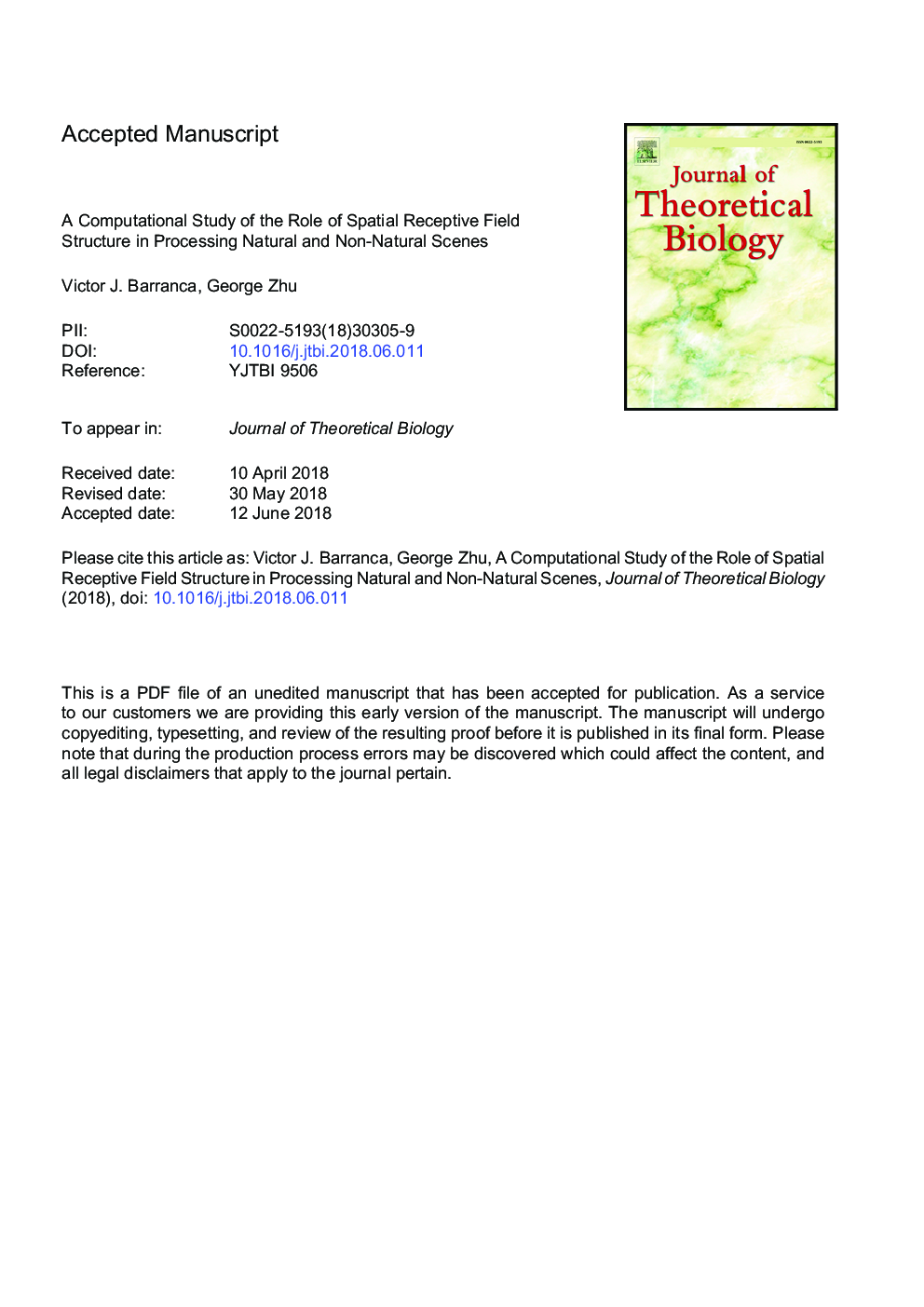| Article ID | Journal | Published Year | Pages | File Type |
|---|---|---|---|---|
| 8876574 | Journal of Theoretical Biology | 2018 | 32 Pages |
Abstract
The center-surround receptive field structure, ubiquitous in the visual system, is hypothesized to be evolutionarily advantageous in image processing tasks. We address the potential functional benefits and shortcomings of spatial localization and center-surround antagonism in the context of an integrate-and-fire neuronal network model with image-based forcing. Utilizing the sparsity of natural scenes, we derive a compressive-sensing framework for input image reconstruction utilizing evoked neuronal firing rates. We investigate how the accuracy of input encoding depends on the receptive field architecture, and demonstrate that spatial localization in visual stimulus sampling facilitates marked improvements in natural scene processing beyond uniformly-random excitatory connectivity. However, for specific classes of images, we show that spatial localization inherent in physiological receptive fields combined with information loss through nonlinear neuronal network dynamics may underlie common optical illusions, giving a novel explanation for their manifestation. In the context of signal processing, we expect this work may suggest new sampling protocols useful for extending conventional compressive sensing theory.
Related Topics
Life Sciences
Agricultural and Biological Sciences
Agricultural and Biological Sciences (General)
Authors
Victor J. Barranca, Xiuqi George Zhu,
